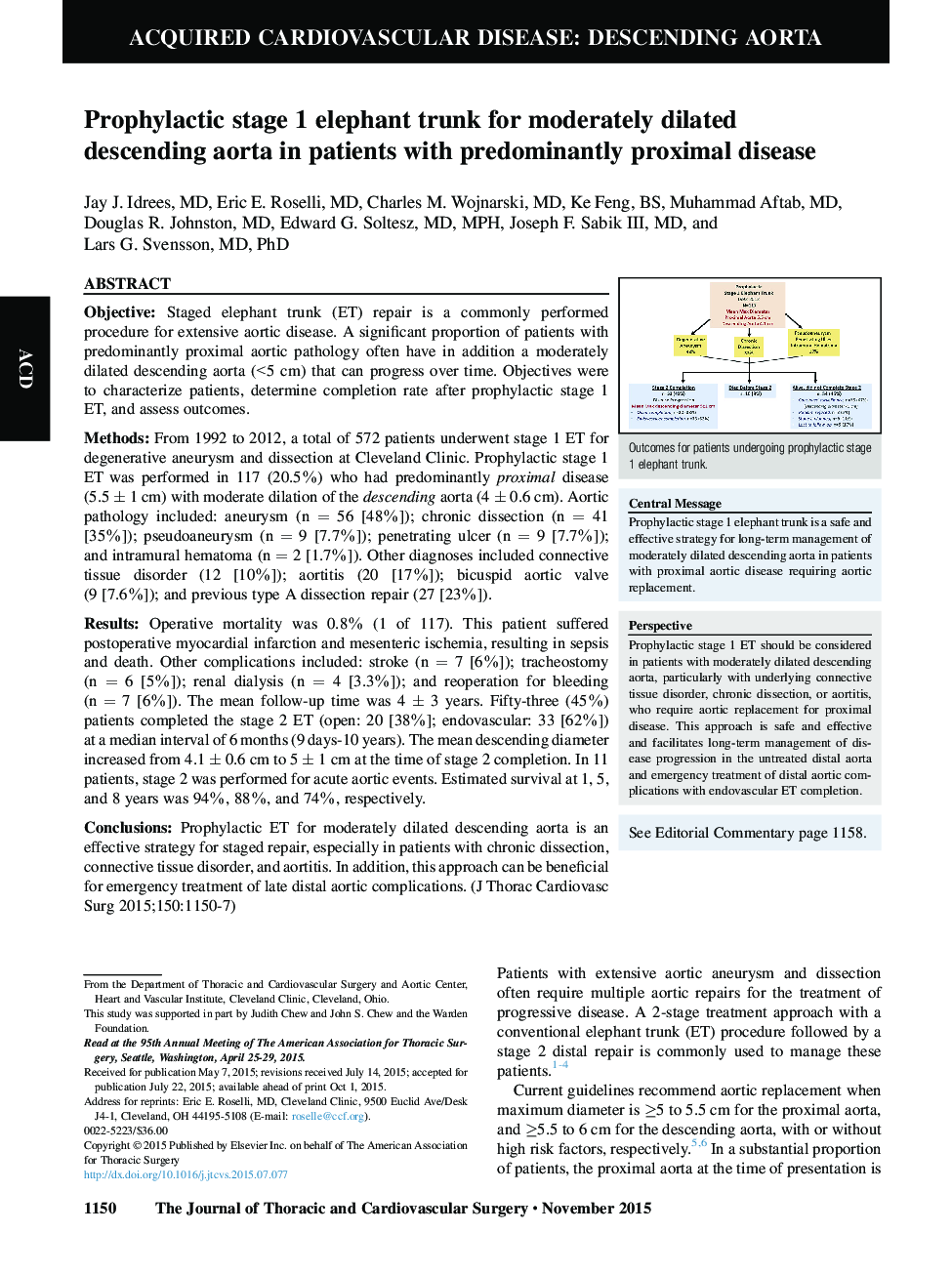| Article ID | Journal | Published Year | Pages | File Type |
|---|---|---|---|---|
| 2979251 | The Journal of Thoracic and Cardiovascular Surgery | 2015 | 8 Pages |
ObjectiveStaged elephant trunk (ET) repair is a commonly performed procedure for extensive aortic disease. A significant proportion of patients with predominantly proximal aortic pathology often have in addition a moderately dilated descending aorta (<5 cm) that can progress over time. Objectives were to characterize patients, determine completion rate after prophylactic stage 1 ET, and assess outcomes.MethodsFrom 1992 to 2012, a total of 572 patients underwent stage 1 ET for degenerative aneurysm and dissection at Cleveland Clinic. Prophylactic stage 1 ET was performed in 117 (20.5%) who had predominantly proximal disease (5.5 ± 1 cm) with moderate dilation of the descending aorta (4 ± 0.6 cm). Aortic pathology included: aneurysm (n = 56 [48%]); chronic dissection (n = 41 [35%]); pseudoaneurysm (n = 9 [7.7%]); penetrating ulcer (n = 9 [7.7%]); and intramural hematoma (n = 2 [1.7%]). Other diagnoses included connective tissue disorder (12 [10%]); aortitis (20 [17%]); bicuspid aortic valve (9 [7.6%]); and previous type A dissection repair (27 [23%]).ResultsOperative mortality was 0.8% (1 of 117). This patient suffered postoperative myocardial infarction and mesenteric ischemia, resulting in sepsis and death. Other complications included: stroke (n = 7 [6%]); tracheostomy (n = 6 [5%]); renal dialysis (n = 4 [3.3%]); and reoperation for bleeding (n = 7 [6%]). The mean follow-up time was 4 ± 3 years. Fifty-three (45%) patients completed the stage 2 ET (open: 20 [38%]; endovascular: 33 [62%]) at a median interval of 6 months (9 days-10 years). The mean descending diameter increased from 4.1 ± 0.6 cm to 5 ± 1 cm at the time of stage 2 completion. In 11 patients, stage 2 was performed for acute aortic events. Estimated survival at 1, 5, and 8 years was 94%, 88%, and 74%, respectively.ConclusionsProphylactic ET for moderately dilated descending aorta is an effective strategy for staged repair, especially in patients with chronic dissection, connective tissue disorder, and aortitis. In addition, this approach can be beneficial for emergency treatment of late distal aortic complications.
